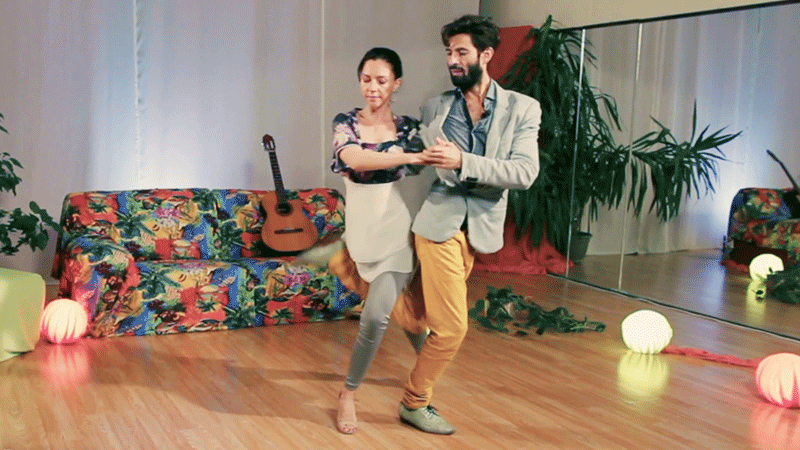Connection and Partnering

Elements - Paradas and Sacadas. Stop, in the name of Tango
Sure, you know how to walk, but do you know how to stop? And when? Yes, sometimes we need to stop and take a breather even during the dance. But putting a stop to the flow of the dance, either using Paradas or Sacadas, shouldn’t be a shock to your partner, so the placement of your feet and the timing are essential. Find out how to be smooth about it.
This lesson is in English.
Elements - Ganchos. Warming up the legs
It’s pretty easy to understand the movement that the leg describes in a Gancho, but the key is the positioning of your feet and reacting fluidly, without breaking the flow of the movement upon leg interaction between partners. Now you’ll discover some exercises to warm up your legs for those curling Ganchos.
This lesson is in English.
Hooked up on Ganchos - Tips to make you feel confident
Get some tips and tricks that will make you “off the hook” in the ronda! In this lesson, Ezequiel explains the importance of timing, coordination, and the reaction to leg interaction.
This lesson is in English.
More Combinations and Tips on Ganchos
You know the basics of the Gancho, now it’s time to unlock the secrets on how to hook them up, use them in combinations and what to watch out for.
This lesson is in English.
Barridas and the secrets of a fluid sweep across the floor
In this final lesson, Ezequiel explains the principle of the Barrida and exemplifies some sequences you can use in milongas.
This lesson is in English.
ADD TO SHOPPING CART
Connection and Partnering
(Instant, lifetime streaming access)SEE HOW SATISFIED OUR CLIENTS CAN BE!
Over 3.000 satisfied customers

After so many years dancing Tango and wasting money taking group classes everywhere and every time I had the chance, I discovered Tangomeet and took all the clases with Mr Sebastian Arce and the beautiful Mariana and no regrets. It has been the best thing I had ever done for my studies of tango. It is such a well thought program that will do for you miracles in the way you dance Tango
Ariel David

"Needless to say we are extremely satisfied with the results."
- Carlynn I.

Best Tango learning/teaching material so far. Great after sales service and always get back to your questions very quickly. Love it !
Shirley Yao


